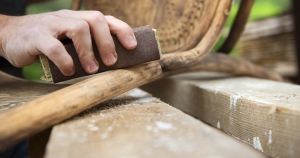 It’s often the small things that go unnoticed and are forgotten. Forgotten, that is, until it stops working. We’ve all dealt with the clogged toilets, the full sinks, even the showers that turn to baths. But there is hope: you do not have to suffer clogged drains forever. We’ll look at common drainage problems, and the best solutions for you, for your pocket book, and for the environment. The answer may be easier than you expect!
It’s often the small things that go unnoticed and are forgotten. Forgotten, that is, until it stops working. We’ve all dealt with the clogged toilets, the full sinks, even the showers that turn to baths. But there is hope: you do not have to suffer clogged drains forever. We’ll look at common drainage problems, and the best solutions for you, for your pocket book, and for the environment. The answer may be easier than you expect!
Drains, like many things, simply take a few minutes of good habits to maintain. A good habit can prevent clogging in the future, and save money down the road on a plumber. Start with the basics: use what you’re given. Many sinks come with a strainer in place. Keep it there, as it’s there for a reason, and keep it clean. In the bathroom sink, keep your sink stopper clean. The buildup of grime around it will, overtime, slow the flow of water and may cause your sink to fill rather than drain. You can also get small screen covers to prevent unwanted materials such as hair and toothpaste out of the drain. If you’re in the kitchen using a garbage disposal, use plenty of cold water, this will discourage food particles from building up and help them wash away smoothly. In the kitchen, use common sense when cleaning after a meal. Avoid dumping hard to drain substances such as grease. That’s what your trash can is for.
Whichever drain you are using, consider pouring hot water down it once a week. This will help dissolve buildup to prevent pipe clogging. If you do have buildup, or have had drainage problems for sometime, you may consider having your home septic system inspected, as several years of buildup can necessitate pumping.
Once your drain is clogged, though, you do have options before calling a plumber. The temptation for many people is to pick a well-known commercial brand and pour it down. This can be effective, but may not be the most environmentally-safe option, and should be considered after a gentler option. Before trying these though, put on a rubber glove and make sure the problem isn’t as simple as a wad of hair blocking the pipe. For a moderately clogged drain, which can be indicated by slow-draining water that isn’t entirely stopped, the remedy can be as simple as baking soda and vinegar. Start with 1/2 cup of baking soda, and follow with 1/2 cup of vinegar. Note that combining these two will foam and possibly fume, so you should wait a few hours (minimum of three) before replacing the drain cover or running water. If your clog is grease-based, you can use baking soda and salt: a half cup of each. Follow with a few cups of boiling water and let it sit for twelve hours before replacing the drain cover and using the sink again.
If these homemade cleaners will not clear your drain, you can move on to a commercial drain cleaner. However, if you do not have success with those, it may be time to consider calling a plumber. Problems that have been allowed to escalate can cause the pipes to be stuck in areas that will be hard to reach, even underground on occasion. To avoid damaging your plumbing, it is best in this case to bring in a professional that you trust. After all - having it properly maintained and repaired will cost you less time, money and inconvenience than replacing will!



